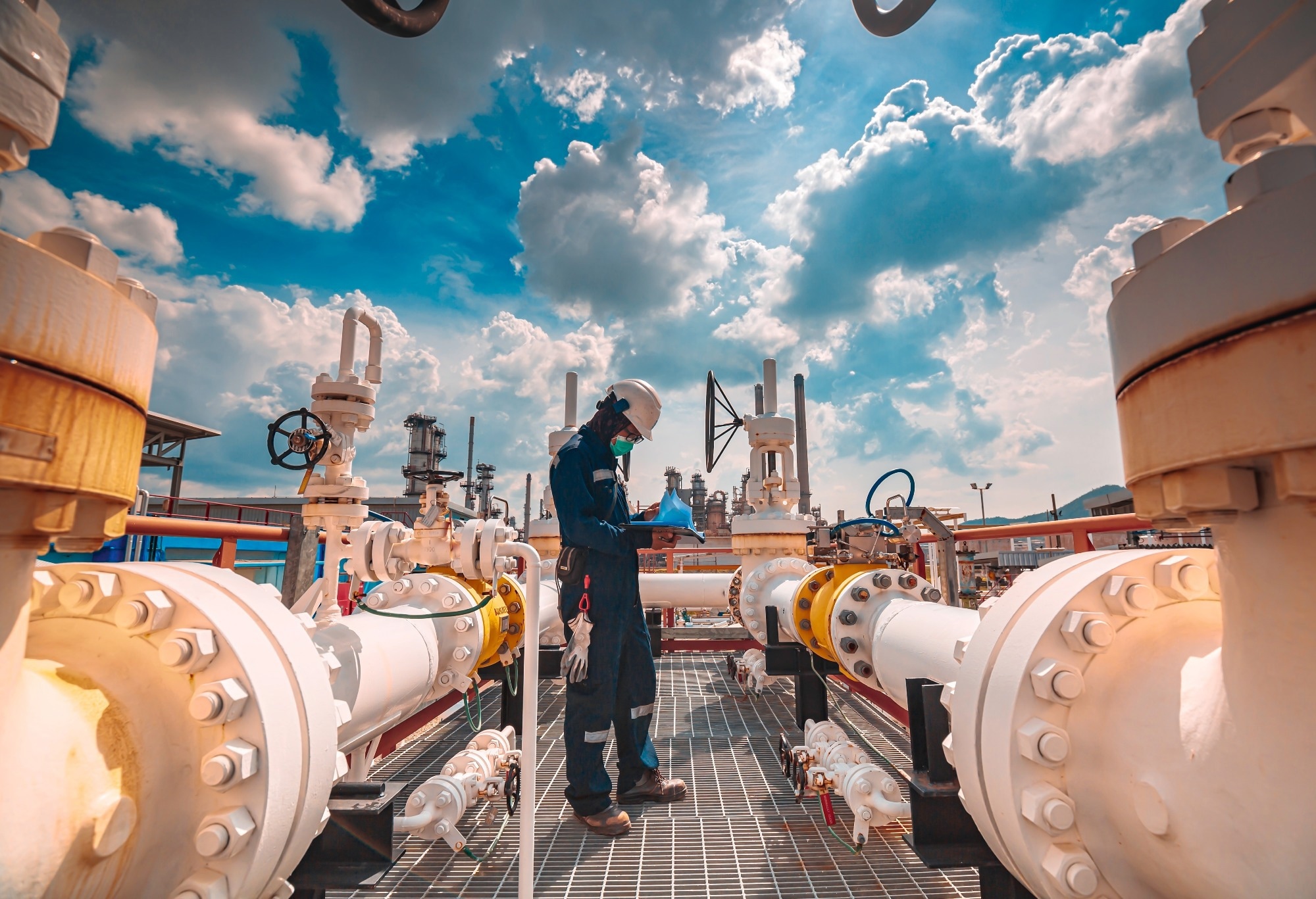Fugitive emissions are a type of unintentional gas or vapor release into the atmosphere, most often associated with industrial operations.
Unlike emissions released through designated vents or stacks, fugitive emissions are difficult to detect and measure due to their diffuse and intermittent nature.
They differ from point source emissions, which are typically managed and monitored via fixed systems like exhaust stacks.

Image credit: noomcpk/Shutterstock.com
Understanding Fugitive Emissions
These emissions are primarily composed of greenhouse gases (GHGs), volatile organic compounds (VOCs), and other harmful air pollutants. They can be released at various stages of industrial activity, including during the extraction, processing, and transport of fossil fuels. Common sources include faulty or aging equipment such as valves, seals, flanges, tanks, and pipelines.
The exact makeup of fugitive emissions depends on the industry and the materials involved. For example, methane and VOCs are prevalent in the petroleum sector, while chemical manufacturing processes often produce a wider array of VOCs along with hazardous substances like hydrogen sulfide.
The Environmental Impact of Fugitive Emissions
The environmental impact of fugitive emissions is both significant and far-reaching. Methane, a primary component, is a highly potent greenhouse gas with over 20 times the global warming potential of carbon dioxide over a 100-year period, greatly intensifying its effect on climate change.
VOCs also pose problems, contributing to ground-level ozone formation, which leads to smog and harmful health effects.
Fugitive emissions must be closely monitored, as they degrade air quality and pose serious risks to both human health and the environment. These pollutants have been linked to respiratory problems, heart disease, and other illnesses. They can also harm wildlife and vegetation, creating wider ecological imbalances.
Regulatory and Industry Perspectives
Globally, regulations are increasingly focused on controlling hazards and mitigating fugitive emissions. Policies aim to limit the release of harmful pollutants and GHG emissions, thereby driving industries toward cleaner and more sustainable practices.
The Paris Agreement, for instance, emphasizes the importance of reducing methane emissions as part of comprehensive climate change mitigation efforts.
From an industry perspective, controlling fugitive emissions is not only an environmental concern but also an economic one. The escape of valuable raw materials, such as natural gas, represents a direct financial loss.
Furthermore, regulatory compliance is increasingly linked to corporate sustainability goals and public perception, making it a critical aspect of business strategy.
Additional challenges may arise in work environments that emit fugitive gases. Despite the use of personal protective equipment, workers may still be at risk of inhaling hazardous gases, such as benzene.
Physical hazards may also occur due to specific types of gas, particularly if they are flammable or if there is a leak in a pressurized containment vessel.
Technologies and Strategies for Mitigating Fugitive Emissions
Technological advancements play a crucial role in the detection and reduction of fugitive emissions. Leak Detection and Repair (LDAR) programs are essential in this regard, utilizing tools such as infrared cameras for the visual detection of otherwise invisible leaks.
Emerging technologies, including drones equipped with sensors, provide innovative solutions for efficient monitoring across extensive areas. Environmental mass spectrometers are specifically designed to assist facilities in monitoring fugitive emissions of toxic organic vapors, thereby safeguarding workers and the surrounding environment from hazardous exposure.
With new technologies, it is possible to swiftly detect fugitive emissions of both organic and inorganic compounds for Method 21 compliance, LDAR applications, and site remediation using lightweight, intrinsically safe portable gas leak detectors.
Additionally, operational modifications can significantly reduce these emissions. Regular maintenance and inspections, upgrading equipment, and implementing best practices for handling and storage represent effective strategies.
The transition towards renewable energy sources and less emission-intensive technologies also contributes to sustainable long-term solutions.
Monitoring Fugitive Emissions for a Positive Global Impact
Fugitive emissions represent a critical environmental concern, significantly contributing to climate change and air pollution. Effectively managing these emissions is vital for promoting environmental sustainability, public health, and the viability of various industries.
With technological advancements and stringent regulatory frameworks, considerable progress is being made in identifying, quantifying, and mitigating these emissions.
As we advance towards a more sustainable future, addressing fugitive emissions remains a key challenge for industries globally. If you are seeking to contribute to these sustainability efforts, we recommend starting with industrial hygiene programs.
Acknowledgements
Produced from material originally authored by Bob Gallagher from Thermo Scientific.
References and Further Reading
- United States Environmental Protection Agency (2025). Overview of Greenhouse Gases. (online) US EPA. Available at: https://www.epa.gov/ghgemissions/overview-greenhouse-gases.
- IEA (2020). Methane Tracker 2020 – Analysis. (online) IEA. Available at: https://www.iea.org/reports/methane-tracker-2020.
- UNFCCC (2015). The Paris Agreement. (online) United Nations Climate Change. Available at: https://unfccc.int/process-and-meetings/the-paris-agreement.
- IPCC (2021). Climate Change 2021: The Physical Science Basis. (online) Available at: https://www.ipcc.ch/report/ar6/wg1/.
- Thermofisher. (2025). eBook - A Guide to Monitoring Fugitive Emissions and Developing a Leak Detection and Repair (LDAR) Program | Thermo Fisher Scientific - US. (online) Available at: https://www.thermofisher.com/in/en/home/global/forms/industrial/epm-monitoring-fugitive-emissions-ldar-program-ebook-registration-form.html?icid=CAD_blog_safety_2024March (Accessed 31 Jul. 2025).
- Thermofisher. (2025). Industrial Hygiene Solutions | Thermo Fisher Scientific - US. (online) Available at: https://www.thermofisher.com/in/en/home/industrial/environmental/air-quality-analysis/industrial-hygiene.html?icid=CAD_blog_safety_2024March (Accessed 31 Jul. 2025).

This information has been sourced, reviewed and adapted from materials provided by Thermo Fisher Scientific – Environmental and Process Monitoring Instruments.
For more information on this source, please visit Thermo Fisher Scientific – Environmental and Process Monitoring Instruments.